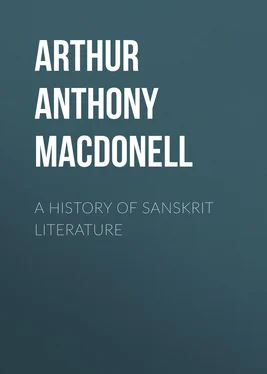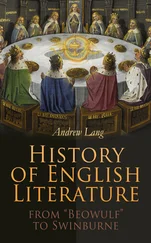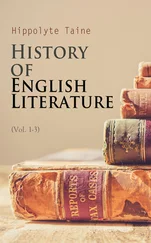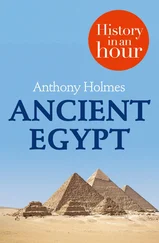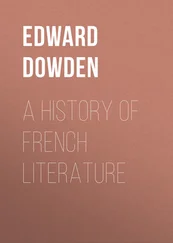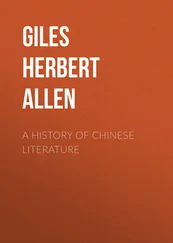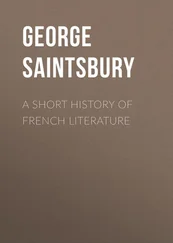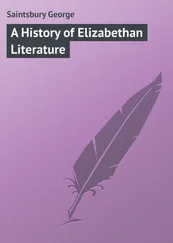Arthur Anthony MacDonell - A History of Sanskrit Literature
Здесь есть возможность читать онлайн «Arthur Anthony MacDonell - A History of Sanskrit Literature» — ознакомительный отрывок электронной книги совершенно бесплатно, а после прочтения отрывка купить полную версию. В некоторых случаях можно слушать аудио, скачать через торрент в формате fb2 и присутствует краткое содержание. Жанр: foreign_prose, foreign_antique, на английском языке. Описание произведения, (предисловие) а так же отзывы посетителей доступны на портале библиотеки ЛибКат.
- Название:A History of Sanskrit Literature
- Автор:
- Жанр:
- Год:неизвестен
- ISBN:нет данных
- Рейтинг книги:5 / 5. Голосов: 1
-
Избранное:Добавить в избранное
- Отзывы:
-
Ваша оценка:
- 100
- 1
- 2
- 3
- 4
- 5
A History of Sanskrit Literature: краткое содержание, описание и аннотация
Предлагаем к чтению аннотацию, описание, краткое содержание или предисловие (зависит от того, что написал сам автор книги «A History of Sanskrit Literature»). Если вы не нашли необходимую информацию о книге — напишите в комментариях, мы постараемся отыскать её.
A History of Sanskrit Literature — читать онлайн ознакомительный отрывок
Ниже представлен текст книги, разбитый по страницам. Система сохранения места последней прочитанной страницы, позволяет с удобством читать онлайн бесплатно книгу «A History of Sanskrit Literature», без необходимости каждый раз заново искать на чём Вы остановились. Поставьте закладку, и сможете в любой момент перейти на страницу, на которой закончили чтение.
Интервал:
Закладка:
To this feature may be traced the myth of the Brāhmaṇas in which Vishṇu appears in the form of a dwarf as an artifice to recover the earth, now in the possession of demons, by taking his three strides. His character for benevolence was in post-Vedic mythology developed in the doctrine of the Avatārs (“descents” to earth) or incarnations which he assumed for the good of humanity.
Ushas, goddess of dawn, is almost the only female deity to whom entire hymns are addressed, and the only one invoked with any frequency. She, however, is celebrated in some twenty hymns. The name, meaning the “Shining One,” is cognate to the Latin Aurora and the Greek Ēōs . When the goddess is addressed, the physical phenomenon of dawn is never absent from the poet’s mind. The fondness with which the thoughts of these priestly singers turned to her alone among the goddesses, though she received no share in the offering of soma like the other gods, seems to show that the glories of the dawn, more splendid in Northern India than those we are wont to see, deeply impressed the minds of these early poets. In any case, she is their most graceful creation, the charm of which is unsurpassed in the descriptive religious lyrics of any other literature. Here there are no priestly subtleties to obscure the brightness of her form, and few allusions to the sacrifice to mar the natural beauty of the imagery.
To enable the reader to estimate the merit of this poetry I will string together some utterances about the Dawn goddess, culled from various hymns, and expressed as nearly as possible in the words of their composers. Ushas is a radiant maiden, born in the sky, daughter of Dyaus. She is the bright sister of dark Night. She shines with the light of her lover, with the light of Sūrya, who beams after her path and follows her as a young man a maiden. She is borne on a brilliant car, drawn by ruddy steeds or kine. Arraying herself in gay attire like a dancer, she displays her bosom. Clothed upon with light, the maiden appears in the east and unveils her charms. Rising resplendent as from a bath, she shows her form. Effulgent in peerless beauty, she withholds her light from neither small nor great. She opens wide the gates of heaven; she opens the doors of darkness, as the cows (issue from) their stall. Her radiant beams appear like herds of cattle. She removes the black robe of night, warding off evil spirits and the hated darkness. She awakens creatures that have feet, and makes the birds fly up: she is the breath and life of everything. When Ushas shines forth, the birds fly up from their nests and men seek nourishment. She is the radiant mover of sweet sounds, the leader of the charm of pleasant voices. Day by day appearing at the appointed place, she never infringes the rule of order and of the gods; she goes straight along the path of order; knowing the way, she never loses her direction. As she shone in former days, so she shines now and will shine in future, never aging, immortal.
The solitude and stillness of the early morning sometimes suggested pensive thoughts about the fleeting nature of human life in contrast with the unending recurrence of the dawn. Thus one poet exclaims:—
Gone are the mortals who in former ages
Beheld the flushing of the earlier morning.
We living men now look upon her shining;
They are coming who shall in future see her (i. 113, 11).
In a similar strain another Rishi sings:—
Again and again newly born though ancient,
Decking her beauty with the self-same colours,
The goddess wastes away the life of mortals,
Like wealth diminished by the skilful player (i. 92, 10).
The following stanzas from one of the finest hymns to Dawn (i. 113) furnish a more general picture of this fairest creation of Vedic poetry:—
This light has come, of all the lights the fairest,
The brilliant brightness has been born, far-shining.
Urged onward for god Savitṛi’s uprising,
Night now has yielded up her place to Morning.
The sisters’ pathway is the same, unending:
Taught by the gods, alternately they tread it.
Fair-shaped, of different forms and yet one-minded,
Night and Morning clash not, nor do they linger.
Bright leader of glad sounds, she shines effulgent:
Widely she has unclosed for us her portals.
Arousing all the world, she shows us riches:
Dawn has awakened every living creature.
There Heaven’s Daughter has appeared before us,
The maiden flushing in her brilliant garments.
Thou sovran lady of all earthly treasure,
Auspicious Dawn, flush here to-day upon us.
In the sky’s framework she has shone with splendour;
The goddess has cast off the robe of darkness.
Wakening up the world with ruddy horses,
Upon her well-yoked chariot Dawn is coming.
Bringing upon it many bounteous blessings,
Brightly shining, she spreads her brilliant lustre.
Last of the countless mornings that have gone by,
First of bright morns to come has Dawn arisen.
Arise! the breath, the life, again has reached us:
Darkness has gone away and light is coming.
She leaves a pathway for the sun to travel:
We have arrived where men prolong existence.
Among the deities of celestial light, those most frequently invoked are the twin gods of morning named Açvins. They are the sons of Heaven, eternally young and handsome. They ride on a car, on which they are accompanied by the sun-maiden Sūryā. This car is bright and sunlike, and all its parts are golden. The time when these gods appear is the early dawn, when “darkness still stands among the ruddy cows.” At the yoking of their car Ushas is born.
Many myths are told about the Açvins as succouring divinities. They deliver from distress in general, especially rescuing from the ocean in a ship or ships. They are characteristically divine physicians, who give sight to the blind and make the lame to walk. One very curious myth is that of the maiden Viçpalā, who having had her leg cut off in some conflict, was at once furnished by the Açvins with an iron limb. They agree in many respects with the two famous horsemen of Greek mythology, the Dioskouroi, sons of Zeus and brothers of Helen. The two most probable theories as to the origin of these twin deities are, that they represent either the twilight, half dark, half light, or the morning and evening star.
In the realm of air Indra is the dominant deity. He is, indeed, the favourite and national god of the Vedic Indian. His importance is sufficiently indicated by the fact that more than one-fourth of the Rigveda is devoted to his praise. Handed down from a bygone age, Indra has become more anthropomorphic and surrounded by mythological imagery than any other Vedic god. The significance of his character is nevertheless sufficiently clear. He is primarily the thunder-god, the conquest of the demon of drought or darkness named Vṛitra, the “Obstructor,” and the consequent liberation of the waters or the winning of light, forming his mythological essence. This myth furnishes the Rishis with an ever-recurring theme. Armed with his thunderbolt, exhilarated by copious draughts of soma, and generally escorted by the Maruts or Storm-gods, Indra enters upon the fray. The conflict is terrible. Heaven and earth tremble with fear when Indra smites Vṛitra like a tree with his bolt. He is described as constantly repeating the combat. This obviously corresponds to the perpetual renewal of the natural phenomena underlying the myth. The physical elements in the thunderstorm are seldom directly mentioned by the poets when describing the exploits of Indra. He is rarely said to shed rain, but constantly to release the pent-up waters or rivers. The lightning is regularly the “bolt,” while thunder is the lowing of the cows or the roaring of the dragon. The clouds are designated by various names, such as cow, udder, spring, cask, or pail. They are also rocks ( adri ), which encompass the cows set free by Indra. They are further mountains from which Indra casts down the demons dwelling upon them. They thus often become fortresses ( pur ) of the demons, which are ninety, ninety-nine, or a hundred in number, and are variously described as “moving,” “autumnal,” “made of iron or stone.” One stanza (x. 89, 7) thus brings together the various features of the myth: “Indra slew Vṛitra, broke the castles, made a channel for the rivers, pierced the mountain, and delivered over the cows to his friends.” Owing to the importance of the Vṛitra myth, the chief and specific epithet of Indra is Vṛitrahan , “slayer of Vṛitra.” The following stanzas are from one of the most graphic of the hymns which celebrate the conflict of Indra with the demon (i. 32):—
Читать дальшеИнтервал:
Закладка:
Похожие книги на «A History of Sanskrit Literature»
Представляем Вашему вниманию похожие книги на «A History of Sanskrit Literature» списком для выбора. Мы отобрали схожую по названию и смыслу литературу в надежде предоставить читателям больше вариантов отыскать новые, интересные, ещё непрочитанные произведения.
Обсуждение, отзывы о книге «A History of Sanskrit Literature» и просто собственные мнения читателей. Оставьте ваши комментарии, напишите, что Вы думаете о произведении, его смысле или главных героях. Укажите что конкретно понравилось, а что нет, и почему Вы так считаете.
